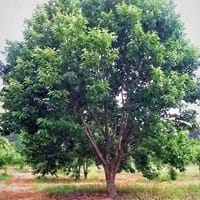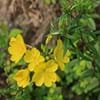Life Span
Perennial
Perennial
Origin
Northeastern United States, Mid-Atlantic United States, Southeastern United States, North-Central United States, Central United States, South-Central United States
North America, Northeastern United States, Mid-Atlantic United States, Southeastern United States, Canada
Types
Apricot Delight, Copper canyon
Not Available
Number of Varieties
Not Available
Habitat
Roadsides, sand dunes, Waste areas
Deciduous forests, Forest margins
USDA Hardiness Zone
5-8
5-8
Sunset Zone
1a, 1b, 2a, 2b, 3a, 3b, 4, 5, 6, 7, 8, 9, 10, 11, 12, 13, 14, 15, 16, 17, 18, 19, 20, 21, 22, 23, 24
2a, 2b, 3a, 3b, 4, 5, 6, 7, 8, 9, 14, 15, 16, 17
Habit
Clump-Forming
Oval or Rounded
Flower Color
Yellow
Gold, Light Green, Light Yellow, White
Flower Color Modifier
Bicolor
Bicolor
Fruit Color
Tan
Light Green, Sienna, Chocolate
Leaf Color in Spring
Green
Green
Leaf Color in Summer
Green
Green
Leaf Color in Fall
Green
Yellow, Yellow green, Gold
Leaf Color in Winter
Light Green
Not Available
Leaf Shape
Oblong
Toothed
Plant Season
Summer
Spring, Summer, Fall
Sunlight
Full Sun, Partial Sun
Full Sun, Partial Sun
Type of Soil
Loam, Sand
Clay, Loam
The pH of Soil
Acidic, Neutral, Alkaline
Acidic, Neutral
Soil Drainage
Well drained
Well drained
Bloom Time
Early Summer, Summer, Late Summer
Early Summer
Tolerances
Variety of soil types
Not Available
Where to Plant?
Container, Ground, Pot
Ground
How to Plant?
Divison, Seedlings, Stem Planting
Seedlings, Stem Planting
Plant Maintenance
Low
Medium
Watering Requirements
Average Water Needs, Do Not over Water, Never Over-water, Requires regular watering, Water more in summer
Needs very little water
In Summer
Lots of watering
Lots of watering
In Spring
Moderate
Moderate
In Winter
Average Water
Average Water
Soil pH
Acidic, Neutral, Alkaline
Acidic, Neutral
Soil Type
Loam, Sand
Clay, Loam
Soil Drainage Capacity
Well drained
Well drained
Sun Exposure
Full Sun, Partial Sun
Full Sun, Partial Sun
Pruning
Remove damaged leaves, Remove dead branches, Remove dead leaves, Remove dead or diseased plant parts
Cut back all stems to the same height, Pinch or prune as they grow to promote branching and bushiness, Remove damaged leaves, Remove dead branches, Remove dead leaves
Fertilizers
All-Purpose Liquid Fertilizer, fertilize in growing season
14-14-14 Fertilizer, Compost, General purpose liquid or granular fertilizer
Pests and Diseases
Slugs, Snails
Chestnut Blight
Plant Tolerance
Variety of soil types
Drought
Flowers
Yes
Insignificant
Flower Petal Number
Single
Not Available
Foliage Texture
Fine
Medium
Foliage Sheen
Matte
Matte
Attracts
Insects
Bees, Birds, Deers
Allergy
Abdominal pain, Constipation, Diarrhea, Skin irritation
conjunctivitis, Vomiting
Aesthetic Uses
Beautification, Borders, Landscape Designing, Showy Purposes
Showy Purposes
Beauty Benefits
Good for skin, Making cosmetics, Stops hair loss
Not Available
Environmental Uses
Air purification, Food for insects, Versatility
Air purification, Wildlife
Medicinal Uses
Eczema
Arthritis, Cough, Sore throat, Swelling
Part of Plant Used
Root
Sap, Wood
Other Uses
Decoration Purposes, Medicinal oil, Showy Purposes, Used as Ornamental plant, Used for its medicinal properties
Decorative veneers, flooring, paneling, Used in Furniture, Used in pulpwood and lumber production
Used As Indoor Plant
Yes
No
Used As Outdoor Plant
Yes
Yes
Garden Design
Edging, Feature Plant, Groundcover, Mixed Border
Edible, Feature Plant, Shade Trees
Botanical Name
OENOTHERA 'Cold Crick'
CASTANEA dentata
Common Name
Suncups, sundrops
American Chestnut
In Hindi
Evening Primrose
अमेरिकी शाहबलूत
In German
Evening Primrose
Amerikanische Kastanie
In French
onagre
Châtaignier d'Amérique
In Spanish
onagra
Castanea dentata
In Greek
Νυχτολούλουδο
american καστανιάς
In Portuguese
Evening Primrose
castanea americana
In Polish
wiesiołka
Kasztan amerykański
In Latin
vespere Primrose
English castaneis
Phylum
Magnoliophyta
Magnoliophyta
Class
Magnoliopsida
Magnoliopsida
Family
Onagraceae
Fagaceae
Clade
Angiosperms, Eudicots, Rosids
Angiosperms, Eudicots, Rosids
Tribe
Onagreae
Not Available
Subfamily
Onagroideae
Not Available
Number of Species
Not Available
Season and Care of Evening Primrose and American Chestnut
Season and care of Evening Primrose and American Chestnut is important to know. While considering everything about Evening Primrose and American Chestnut Care, growing season is an essential factor. Evening Primrose season is Summer and American Chestnut season is Summer. The type of soil for Evening Primrose is Loam, Sand and for American Chestnut is Clay, Loam while the PH of soil for Evening Primrose is Acidic, Neutral, Alkaline and for American Chestnut is Acidic, Neutral.
Evening Primrose and American Chestnut Physical Information
Evening Primrose and American Chestnut physical information is very important for comparison. Evening Primrose height is 1.00 cm and width 0.10 cm whereas American Chestnut height is 1,830.00 cm and width 2,130.00 cm. The color specification of Evening Primrose and American Chestnut are as follows:
Evening Primrose flower color: Yellow
Evening Primrose leaf color: Green
American Chestnut flower color: Gold, Light Green, Light Yellow and White
- American Chestnut leaf color: Green
Care of Evening Primrose and American Chestnut
Care of Evening Primrose and American Chestnut include pruning, fertilizers, watering etc. Evening Primrose pruning is done Remove damaged leaves, Remove dead branches, Remove dead leaves and Remove dead or diseased plant parts and American Chestnut pruning is done Cut back all stems to the same height, Pinch or prune as they grow to promote branching and bushiness, Remove damaged leaves, Remove dead branches and Remove dead leaves. In summer Evening Primrose needs Lots of watering and in winter, it needs Average Water. Whereas, in summer American Chestnut needs Lots of watering and in winter, it needs Average Water.





